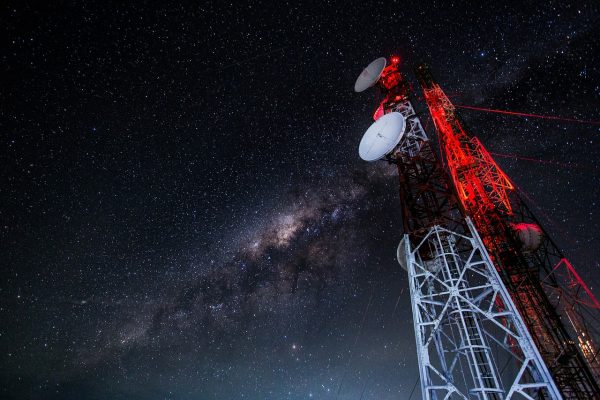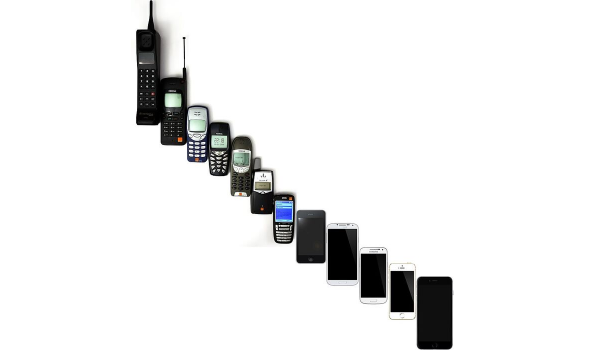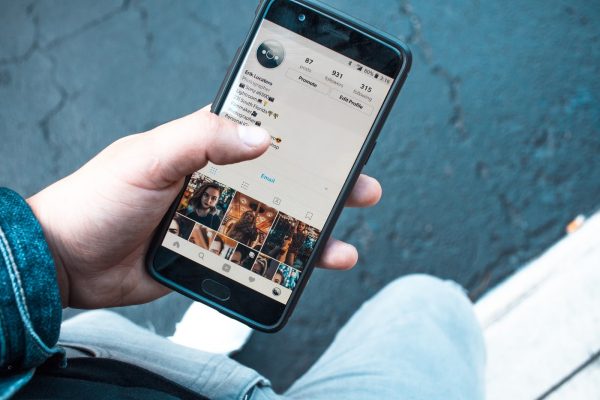Cellular data is equally important as a mobile phone. Most of the time we would agree that a mobile phone can do wonders. But, truth is, without mobile data, your smartphone is just like any other regular phone. As much as you would like to stay connected on your blog or social media, without an internet connection, that’s simply impossible. In many scenarios, connectivity is imperative in our lives. But how much do you really know about cellular data and how does it actually work? Here are the essentials you need to get a good grasp of cellular data.

What Is Cellular Data?
There are usually two ways you can connect to the internet: WiFi network or cellular data. While both of these use radio waves, WiFi covers a limited area and cellular data, on the other hand, lets you connect as long as you’re in a geographical area covered by your mobile network carrier.
Does WiFi use cellular data? The simple answer is no. Though they both use radio frequencies, their connections are independent of each other. So, you don’t have to worry about running out of your data allotment if you’re connected to the internet via WiFi.
Generally, cellular or mobile data is the technology that lets you connect wirelessly using cell towers that transmit and receive radio signals. While the modern-day use of cellular data is starting to lean more toward connecting to the internet, cellular network technology is the one that originally enables us to have calls or send texts wirelessly.
The Technology Behind Cellular Data
While the technicalities of cellular data technology may be a bit difficult to memorize, the overall concept of how it works is easy to understand. To enable a wireless connection, cellular data technology lets it communicate with other devices through certain radio frequencies. The data you send or receive through a mobile network is transmitted to or from a central hub or station known as cells. One cell covers certain geographical areas, and these cells overlap to effectively transmit your data and have a wider reach. Ultimately, as long as your mobile network carrier has cell towers that cover a certain area, cellular data remains to be available to you.

History of Cellular Data Networks
The world has been using cellular data network technology for decades now, and there are no signs that it’ll stop soon. As simple cellular phones evolved to today’s smartphones, and as our needs changed from simple calls and texts to connecting to the internet, cellular network technology has managed to adapt.
We’ve gone through many iterations and generations of mobile network technology, with each generation improving upon many features from its predecessors. Here are just some of the cellular data network technology generations we’ve used in the last couple of decades.
Second Generation: 2G Network
The first cellular data network technology iteration many of us might be familiar with is the second generation or 2G, which initially launched in 1991. Like the very first generation of mobile networks, 2G lets phone users make calls and send texts with other mobile phone users.
Apart from this, 2G, of course, added some more features. First, this generation started making phone calls and texts encrypted, making things more secure for the user. Second, it enabled this technology to be more widely available as it efficiently used the radio frequency it was set on. Thirdly, it’s the first generation to offer actual data services on mobile phones.
Apart from simple texts, 2G enabled users to send picture messages and multimedia messages (MMS). Its generational evolutions also brought about 2.5G General Packet Radio Service (GPRS) and 2.75G EDGE, which enhanced data usage. These evolutions let mobile phone users browse the internet with theoretical maximum speeds of up to 48kbits/s to 300kbits/s, respectively.
While some countries have discontinued the use of 2G networks, this technology is still up in most parts of the world.
Third Generation: 3G Network
The introduction of cellular data usage in 2G networks had opened a lot of possibilities for advancements. And these mobile tech evolutions did come with 3G as it first launched in 2001. As is standard with any mobile network technology iteration, 3G lets users talk over the phone or communicate via texts. What 3G brought to the table, however, are improved data speeds and improved security for users.
Compared to 2.75G’s theoretical maximum of around 300 kbits/s, the data rates in 3G have increased significantly. Speeds offered by commercial carriers vary depending on the service provider, but in this generation, people started seeing speeds anywhere from 348 kbits/s to a theoretical maximum of 21.6 Mbits/s. With increased data rates, and with a wider bandwidth, many new phone applications had started being introduced.
3G also improved upon its security features. Apart from sending and receiving encrypted communication signals, 3G has introduced network authentication for User Equipment (UE). This helps ensure that the users are connected to the network they intend to connect to.
Fourth Generation: 4G Network
Fast forward to today, the iteration of mobile technology people in most countries and mobile carriers around the world now use is 4G. It improved upon the technology used by its predecessors. However, now, this technology has stopped using circuit switching for connections and uses all-IP communications in its place.
Many new advanced features have been introduced with 4G, such as channel-dependent scheduling, link adaptation, mobile IP, and the previously mentioned all-IP communications connections. It also brought fast upload and download speeds, reaching 500mbps and 1Gbps, respectively.
Upcoming Mobile Network: 5G
The future of cellular network technology is here. The latest generation of mobile data technology, 5G, has started rolling out in 2020, with many countries aiming to fully adopt this in the following months. While providing similar yet augmented features of its predecessors, 5G will make use of three different spectrum bands, including the mid and high-band spectrums.
With this, 5G brings lightning-fast internet speeds, with many carriers hoping to have 1 Gbps as the average. However, it also has its limitations as mid to high-band spectrum frequencies cover a smaller area. So, 5G signal hubs will take the form of smaller cells instead of the large towers previous networks made use of.

Cellular Data Services
Today, you can choose from a wide array of mobile data service providers. While they have different offers and plans for you to pick from, there are a couple of services common to all of them.
Data Plans
If you want to connect to the internet, you’ll probably want to look for a carrier with good data plans. Data plan services often vary in price depending on data limitations and internet speed. The main difference between limited and unlimited plans is data restriction. Depending on what’s stipulated in the offer, limited plans cap your data at a certain number of gigabytes (GB) per month. Unlimited data plans don’t have this cap.
When you subscribe to an unlimited data plan, it’s normal that you’ll expect unlimited data. However, this doesn’t necessarily mean that you’ll enjoy full network speed when streaming with the data plan. When you reach a data threshold as an unlimited plan subscriber, the carrier can opt to slow your internet speed down or make your connection a low priority on your network. Yes, there are still carriers that offer unlimited data plans at full speed all the time, but such providers are few and hard to find. While getting unlimited data sounds tempting, consider the conditions of the plans you’re getting and assess if it’s truly the better option.
Data Roaming
Many carriers offer data roaming, whether it be domestic or international, and certain plans have this included in the package. This service enables users to stay connected using cellular data even though they’re out of the service provider’s coverage area. Mobile data service providers usually have arrangements with smaller providers domestically or other major providers overseas to offer roaming services for their users.
Roaming charges are infamous for being expensive so accidentally turning on this feature on your phone can cost you a lot of money. If you’re not traveling anytime soon, it’s best to leave data roaming off on your phone. You can toggle this in your phone’s network settings menu.

Social Media
One of the most common uses of cellular data is checking social media. Sites like Facebook, Instagram, and Twitter have applications available on your phone to use. However, how much mobile data do these sites use up? If you’re posting a Facebook status or posting a Tweet without any images, you’ll likely use up only a few kilobytes (KB) of data. However, fully using these sites or apps requires more. Activities such as browsing and refreshing your social media feed can use up around 0.2 to 1.5 megabytes (MB) of data per minute. If there’s a video on your feed that you decide to stream, your cellular data usage can go up to 2.5 MB per minute.
General Internet Use
Your mobile data is also used to connect to the internet for research and communication. Of course, this also uses up cellular data if you’re connected through this technology. If you’re browsing the internet generally for about an hour, you may use up around 10 to 25 MB of data if the sites you visit are not image-heavy. Meanwhile, if you’re using cellular data to send emails, expect to use around 20 KB to 2 MB of data per email sent, depending on whether your message has attachments or not. Additionally, if you’re using your phone for navigation, expect to use 600 KB of data per minute on average.
Media Streaming
Entertainment is a huge part of our lives, and most of us now do it on our phones. There are numerous applications that let us stream or download movies and songs to our smartphones. If you’re using mobile data, do note that streaming these type of media files consume a lot of data. While streaming or downloading a song, expect around 3 to 5 MB of data to be used up. And videos or movies can use up around 1.5 GB of data per hour of video content.
How to Manage Your Cellular Data Usage
Most cellular data plans are limited in one way or another. So knowing how to manage the data you consume well is a must if you want to actually get a bang for your buck. Luckily, there are many ways to do this, depending on what you find most convenient and reasonable.
Through Your Mobile Carrier
One way to monitor your cellular data usage is through your mobile carrier. Since you’re subscribed to their plans, they’ll be monitoring your data usage to make sure you’re well within your plan limitations.
Of course, you also have the right to access this data as you are their consumer. Now, many of these carriers make mobile data monitoring a lot more convenient for their customers. Some carriers let their consumers do so by logging into their accounts on a monitoring webpage. Some also give the option to check their cellular data consumption with the use of mobile applications. Others also let you dial a code on your phone and you’ll receive your mobile usage stats via text message. In the US, most major commercial telecom providers, such as T-Mobile, Verizon, and AT&T offer this service.
Managing Data Usage on iOS Phones
Managing mobile data on iOS phones is a breeze especially since Apple added a feature to the software that lets you do just this. In the settings menu, go to the “Cellular” section. There, you’ll find settings that will let you manage your mobile data connection. Then, tap on the “Cellular Data” option. Doing so will lead you to a settings section with a list of apps and their corresponding mobile data usage settings.
There, you can choose to limit or even turn off mobile data usage for each and every app on your phone. If you find an app that’s not in use a lot, you can stop it from consuming background data. While this feature is often overlooked, using it will let you maximize your data usage for apps that you consistently use.
If you want to do more when it comes to data monitoring on iOS, you can also download third-party apps from the App Store. Such apps are DataMan and MobiStats for iOS.
Managing Data Usage on Android Phones
Android phones don’t have cellular data settings similar to the one on iOS. Luckily, there are a lot of apps that you can use to do the same thing and monitor your data. Some of the most prominent ones include Google’s very own Datally as well as the GlassWire app by Secure Mix LLC. These apps, including other third-party apps, are all available on the Google Play Store.
Tips on Minimizing Cellular Data Usage
If you’re really on a tight budget and you want to maximize your limited data, there are some simple practices you can adopt to help you ensure this. Apart from monitoring your data, turning off background data or the data your phone consumes when not in use is also ideal. Additionally, only use your mobile data when you’re somewhere without access to WiFi. When you’re at home with a stable internet connection, turn off your mobile data and connect to the WiFi instead.
If you want to lower data usage while using social networking sites like Facebook, Instagram, or Twitter, you can do so by going to your app settings and turning off video autoplay. You can also save mobile data if you know you’re traveling and you want to bring entertainment with you. To make sure you’re not eating up a lot of mobile data in this scenario, make sure to download the videos and songs for offline use while you’re connected to your WiFi at home.
Cellular Data Is Now a Normal Part of Life
Today, it’s hard to imagine what our lives would be like if cellular data didn’t exist. Long-distance wireless calls and browsing the internet would seem impossible without it. Cellular data has provided everyone around the world with the ability and convenience to do research and to communicate for many years. It’s still evolving and continues to evolve as time passes.
